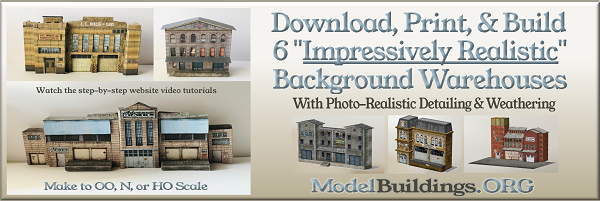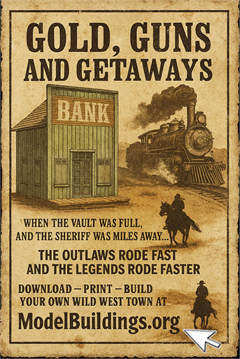Everything on model trains, model railroads, model railways, locomotives, model train layouts, scenery, wiring, DCC and more. Enjoy the world's best hobby... model railroading!
Insulfrogs or Electrofrogs
Duncan is into N gauge and sent in this question:
“Hi just starting in N gauge, I am planning my DCC railway and want to know about turnouts, do I need Insulfrogs or Electrofrogs?”
Use an Ask a Question link to send in your question for publication.
7 Responses to Insulfrogs or Electrofrogs
Leave a Reply















Electrofrogs in N scale would be my preference. They have a complete electrical path through the switch ensuring no jittering or stopping. They have two installation modes. For DCC the frog can be wired up with a switch to ensure no shorts across the frog, hey can be used as is for DCC as well but the extra wiring is recommended.
In DC no alteration is necessary and they can be used straight out of the box, but I would install “stay alives” to counteract dirty track or for short locomotives.
my n scale layout is all insulfrog turnouts and I do not have any problems with loco’s stopping
Definitely electrofrogs, they cost a bit more but you will not regret it, pain free modelling
If you are building a shelf layout or have access to all turnouts. And wish to hand throw them. Don’t need wiring. You can do what I did. Insulfrogs. Originally I just flipped them by finger. Then, I added small slide switches. Connected then to the throw rods. And if I ever need to, can wire lights. But no machines and nothing fancy. I did not wire frogs. In fact, the turnouts are not even fastened down. Can be taken out and replaced easily. Electrofrogs may be better, but do require wiring to be most efficient. And when you wire a turnout, it isn’t easy to replace. ? (I have once seen where a loco picked the point and ruined the turnout. Rare.) And of course, it you can’t reach the turnout, a motor is necessary. And that also requires wiring. And in those instances, where you want auto control, panel switches, lights, etc. The Electrofrogs may be best. Your choice. This is IMHO.
It’s not about what you need, but what you want. With electrofrog, you usually need to insulate the frog end from the rest of the track to avoid short circuits, so it takes a little more thought when laying the track etc.
With insulfrogs however, there is a danger that the locomotive will stall on the frog as there is no power to the wheels. You should consider the size of locomotive you will use, the shorter ones are more likely to stall.
I’m with Geoff on this one – a two-truck diesel loco with all-wheel pick-up will take its power from either side of the turnout, so insulfrog would be ok.
But a short steam 0-4-0 switcher (shunter) might struggle to maintain good contact on insulfrog.
I’ve used both methods and went with electrofrog, yes as stated a bit more wiring is needed which equates to more soldering( potential failure points if your soldering is dogey) but if done correctly it’s trouble free and as stated 0 4 0 run really well over them, also depends on how many points your using, just from a work load point, if it’s 24 it’s a lot of work if it’s 10 then that’s easy